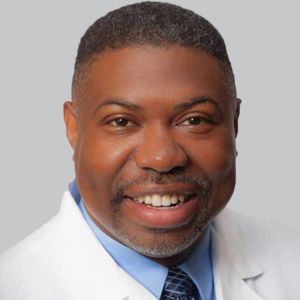Article
Understanding the Progress Made for the Migraine Community
Author(s):
Roderick Spears, MD, FAHS, FAAN, professor of neurology, University of Pennsylvania, discussed the need to raise awareness of migraine and how the community can build upon the progress made.
Roderick Spears, MD, FAHS, FAAN

Miles for Migraine, an advocacy organization dedicating to raising awareness of migraine, hosted a fundraising event in Philadelphia earlier this month, focusing on diagnosis of the disease, treatment options, and health disparities that remain within the field. The event concluded with headache medicine specialists Courtney White, MD, and Roderick Spears, MD, FAHS, FAAN, speaking about the importance of migraine, as well as answering questions from patients and clinicians alike.
Spears, regional medical director of neurology, Penn Specialty Practice, and professor of neurology, Perelman School of Medicine, University of Pennsylvania, has done a sizeable amount of research regarding disparities in migraine and the differences in care those in underserved communities may face. NeurologyLive sat down with Spears at the event to get his thoughts on the overall state of the space, the current unmet needs, and the ever-expanding drug development pipeline.
NeurologyLive: What steps should patients take if they feel they’re experiencing migraine?
Roderick Spears, MD: Migraine is typically a headache on one side of your head that involves throbbing and pulsating. You may become sensitive to light and sound, there can be nausea and vomiting, and movement makes it worse. It’s the kind of headache that tends to cause you to not want to do anything. The key with it, though, is that if it’s recurring, then you can be confident it's migraine. You should then seek a medical professional to get a diagnosis.
Can you describe the greatest challenges underserved communities face in terms of access and treatment of migraine?
Part of it is time. With the kind of work that folks do, when they take their time to go see a doctor, they want it to be high yield. To go see a physician and have it not taken seriously could be discouraging for these patients. Access to care, whether that’s based on geography or finances, could be an issue. But getting the correct diagnosis from the start is extremely important and sometimes does not happen. Even when the patient does everything that they can do in their power, they may not receive proper diagnosis of migraine.
How can we change the public perception of migraine?
An event like Miles for Migraine is very important. It’s nice that it happens every year, because it’s an opportunity to provide education to the lay public. It’s an opportunity to provide education to medical professionals. Within the medical community, doing educational programs, and just side-by-side teaching, especially for those coming up through medical school and residency, to raise awareness of migraine. A lot of people don’t think of it as anything more than just a headache. It’s a complex disorder with a lot of other features that costs us ability. It costs about $19 billion a year in lost work. That’s pretty significant.
What are the greatest needs in the migraine space right now?
More awareness within the space is important, especially in underserved communities. We need to bring that into those communities on a regular basis to target these patients and let them know, “Hey, we’re here to provide service for you and help improve all the things you just talked about if you come for our services.” Help get those days and hours back with their family, on their job, and improve their quality of life.
With a treatment landscape that is ever-growing, how does each medication differ?
There are several that target calcitonin gene-related peptide or CGRP, which is a pathway that had been looked at for about 15 to 20 years starting in the 80s. Finally, medications came to the market in 2018 that helped prevent migraine, and more recently, those that help stop migraine attacks at the time. They are migraine specific, which mean they work for nothing else. The side effect profile is mild, and the reduction in days is significant, with most patients experiencing at least a 50% reduction. That’s been a game-changer for a lot of people. Before 3 years ago, a lot of our therapies were designed for something else, whether that was seizures, depression, or blood pressure. They did help control migraine, but with a lot of side effects. We’re excited about having migraine-specific therapies in the field that we can offer to patients. There are a lot of options, from medications to devices, that can help treat a migraine attack.
Are there aspects of drug development that need urgent improvement?
I don’t think so. I think we’re on the right track. For a long time, if you had vascular or cardiovascular diseases, we didn’t have many options for you, but that’s changed now. We also have other medications where you don’t necessarily have to swallow a pill. It can be an injection or nasal spray. All of those are positive things as far as being able to get the right therapy in the body without the trauma. There’s always opportunity for improvement, but we’re in a good place right now.
Transcript edited for clarity.




